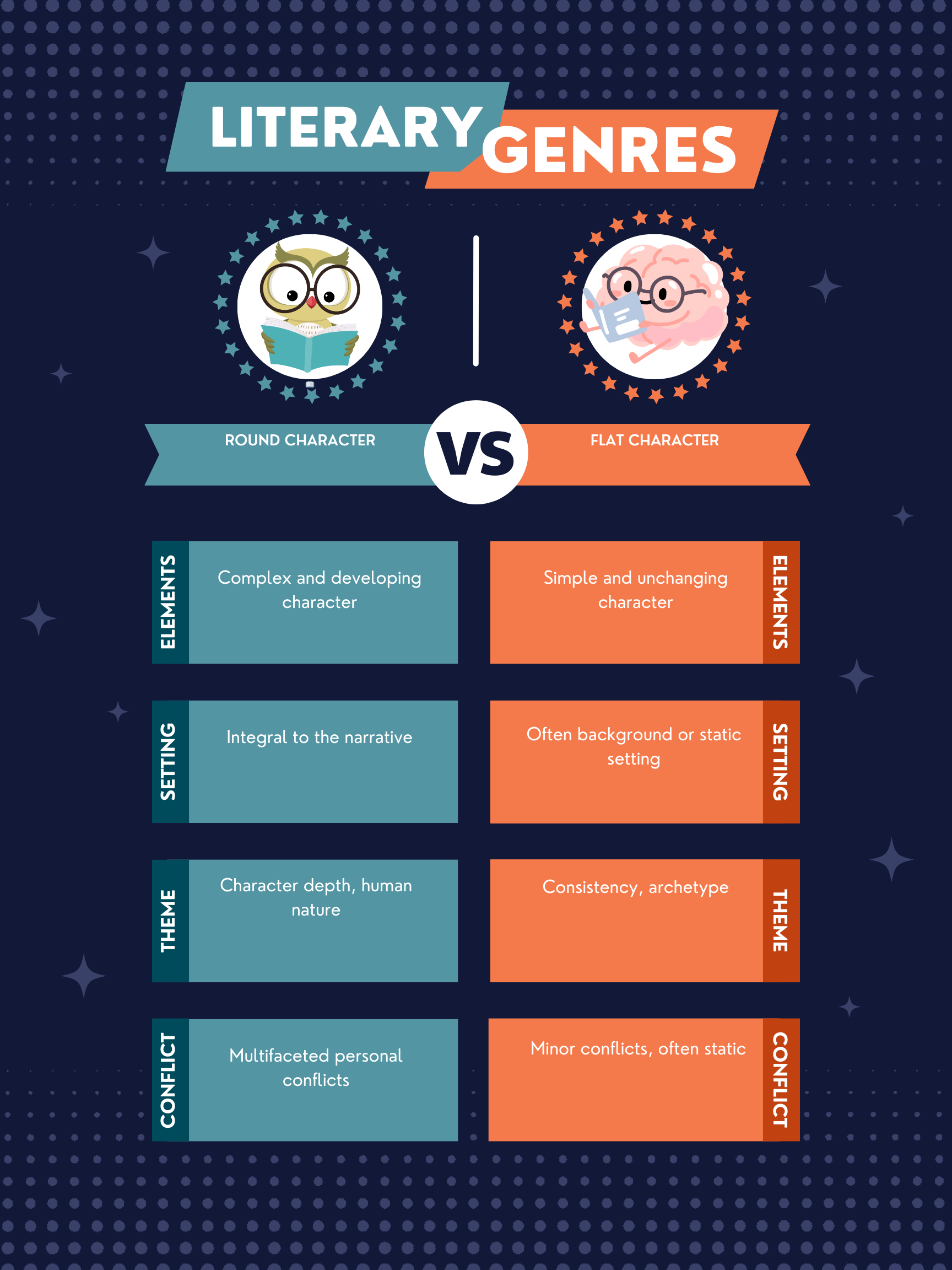Round Characters are complex and undergo development, sometimes sufficiently to surprise the reader; Flat Characters are relatively uncomplicated and do not change throughout the story.
Characters are the heart of any narrative, and their complexity, or lack thereof, plays a crucial role in driving the story forward. Let’s delve into the nuances that differentiate round characters from flat characters. 📚🎭
Round Character
Round characters are depicted with complexity and depth, mirroring real human personalities. They experience growth and change, making them relatable and memorable. Elizabeth Bennet in Jane Austen’s “Pride and Prejudice” exemplifies a round character, showcasing development from prejudice to understanding and love.
Flat Character
Flat characters, on the other hand, embody a single trait or a few traits and remain consistent throughout the story without significant growth or changes. They serve to support the narrative or highlight aspects of round characters. Mr. Collins, also from “Pride and Prejudice,” is a flat character, portrayed as consistently pompous and foolish, primarily to contrast with more complex characters and to satirize societal norms.
Summary
| Literary Device | Definition | Purpose | Usage | Relevant Examples |
|---|---|---|---|---|
| Round Character | Complex characters that undergo development and can surprise the reader. | To mirror real-life complexity and growth, enhancing relatability. | Main characters in various genres. | Elizabeth Bennet in “Pride and Prejudice.” |
| Flat Character | Simplistic characters that do not change throughout the story. | To support the narrative or contrast with round characters. | Supporting roles in various genres. | Mr. Collins in “Pride and Prejudice.” |
Writing Tips
For Round Characters:
- Develop a Backstory: Create a detailed history for your character to inform their motivations and actions.
- Show Growth: Plan a character arc that shows development in response to the story’s events.
- Incorporate Complexity: Give your character conflicting feelings or beliefs to add depth.
For Flat Characters:
- Define Their Role: Understand the purpose your flat character serves in the story, whether as comic relief, a foil, or a thematic symbol.
- Keep Them Consistent: While they may not change, ensure their behavior and traits are consistent and believable.
- Balance Their Presence: Use flat characters to support the narrative without overshadowing your round characters.
FAQs
Can a flat character become a round character?
While uncommon, a flat character can be developed into a round character if the narrative expands their role and provides depth and growth.
Why are flat characters important in a story?
Flat characters help move the plot forward, provide relief or contrast, and can underscore the themes or highlight the development of round characters.
Exercise
Read the following excerpt: “Despite her initial disdain for the village’s customs, she found herself participating with growing enthusiasm, her perceptions changing as she formed unexpected friendships.”
Answer: This passage describes a round character, indicating complexity and development in her attitudes and relationships.
Other Interesting Literary Device Comparisons
- Dynamic vs Static Characters: Dynamic characters undergo significant internal change, while static characters remain the same throughout the story.
- Protagonist vs Antagonist: The protagonist is the main character driving the story, often facing opposition from the antagonist, who can be a round or flat character depending on their portrayal.
- Direct vs Indirect Characterization: Direct characterization tells the audience what a character is like, whereas indirect characterization shows it through actions, speech, and appearance.
Exploring character complexity enriches narratives, making them more engaging and reflective of the multifaceted human experience. 📘💡

